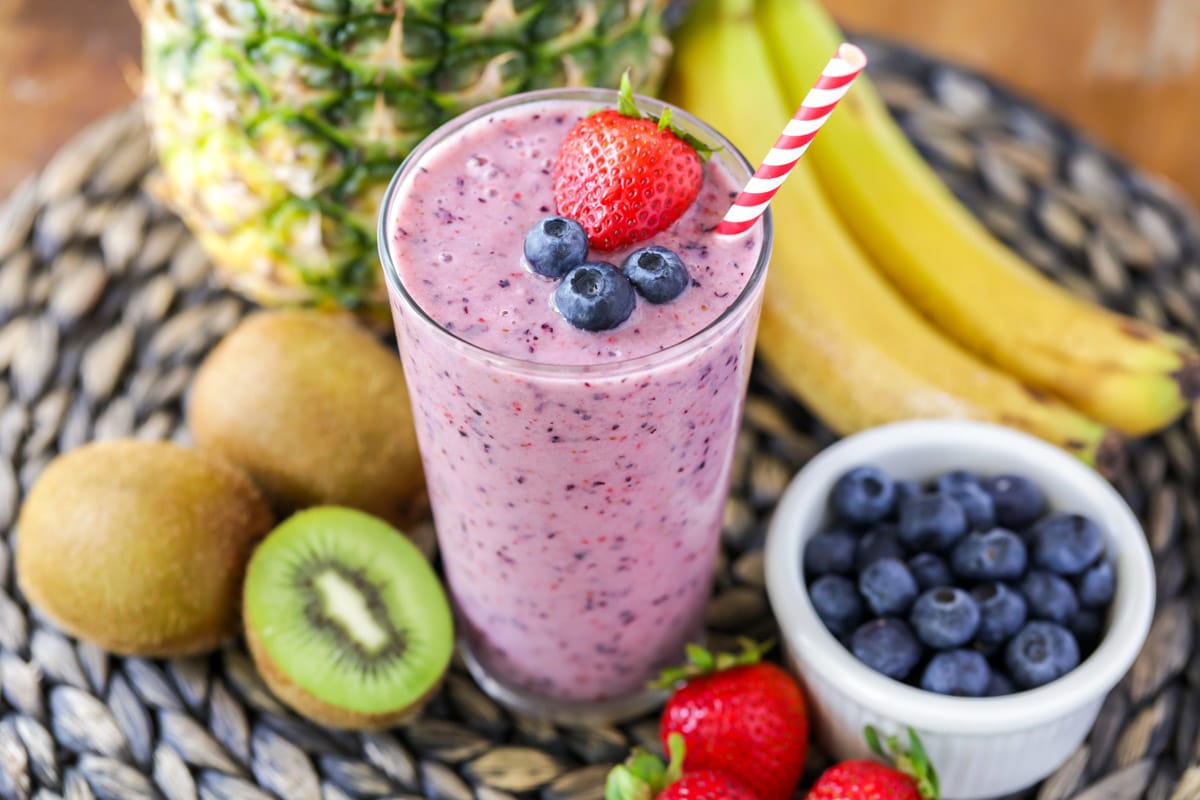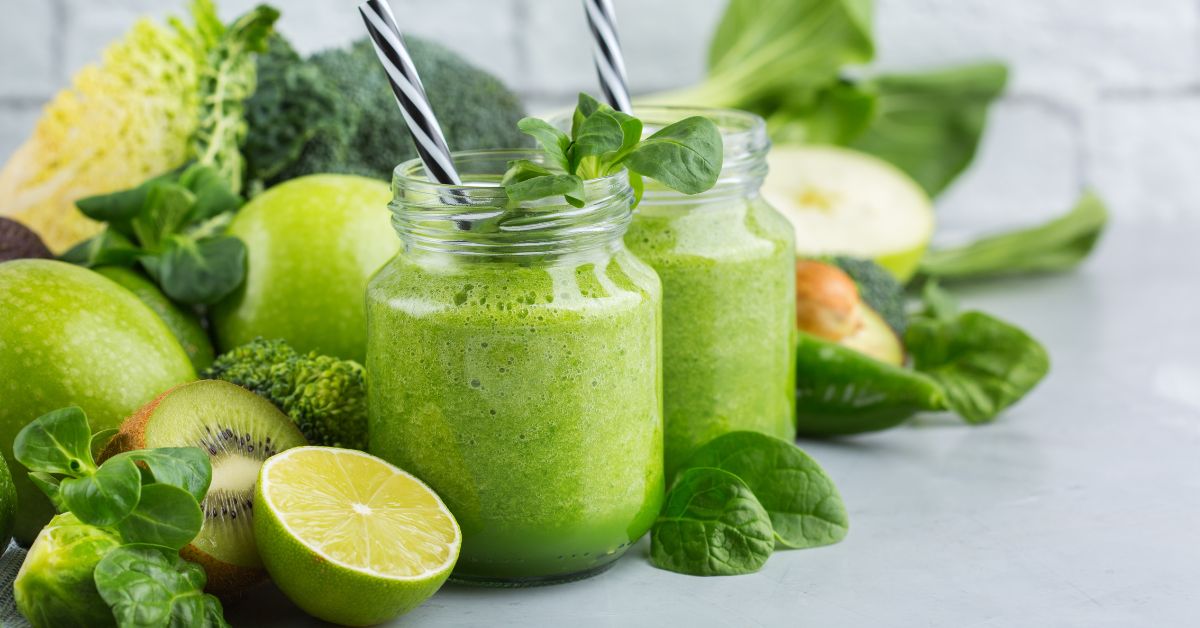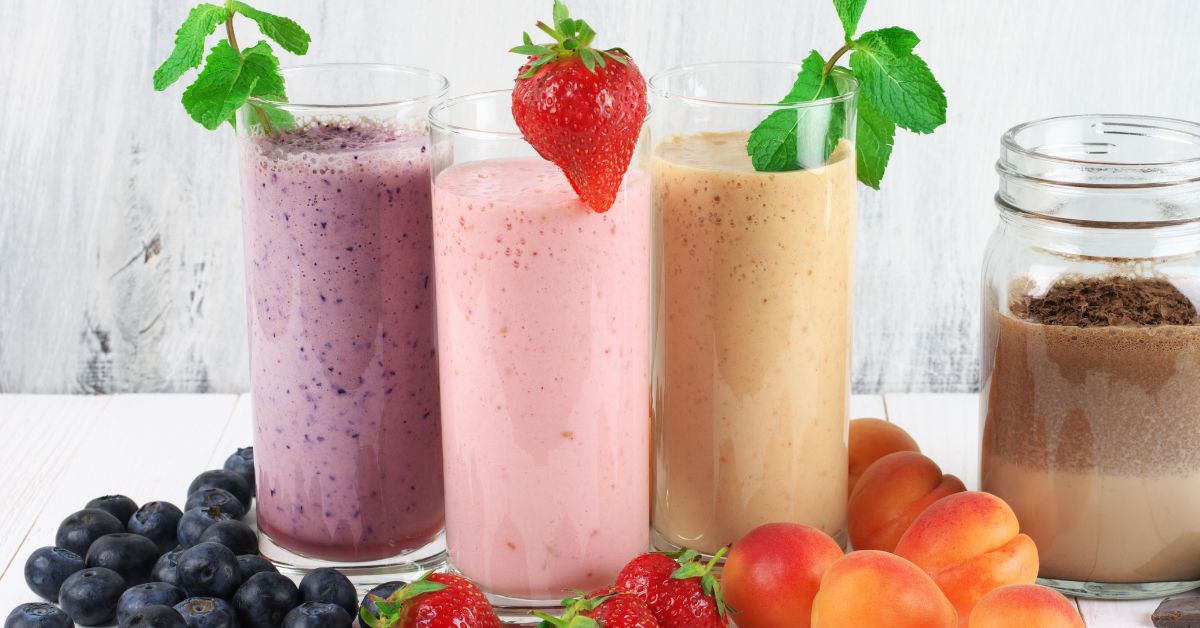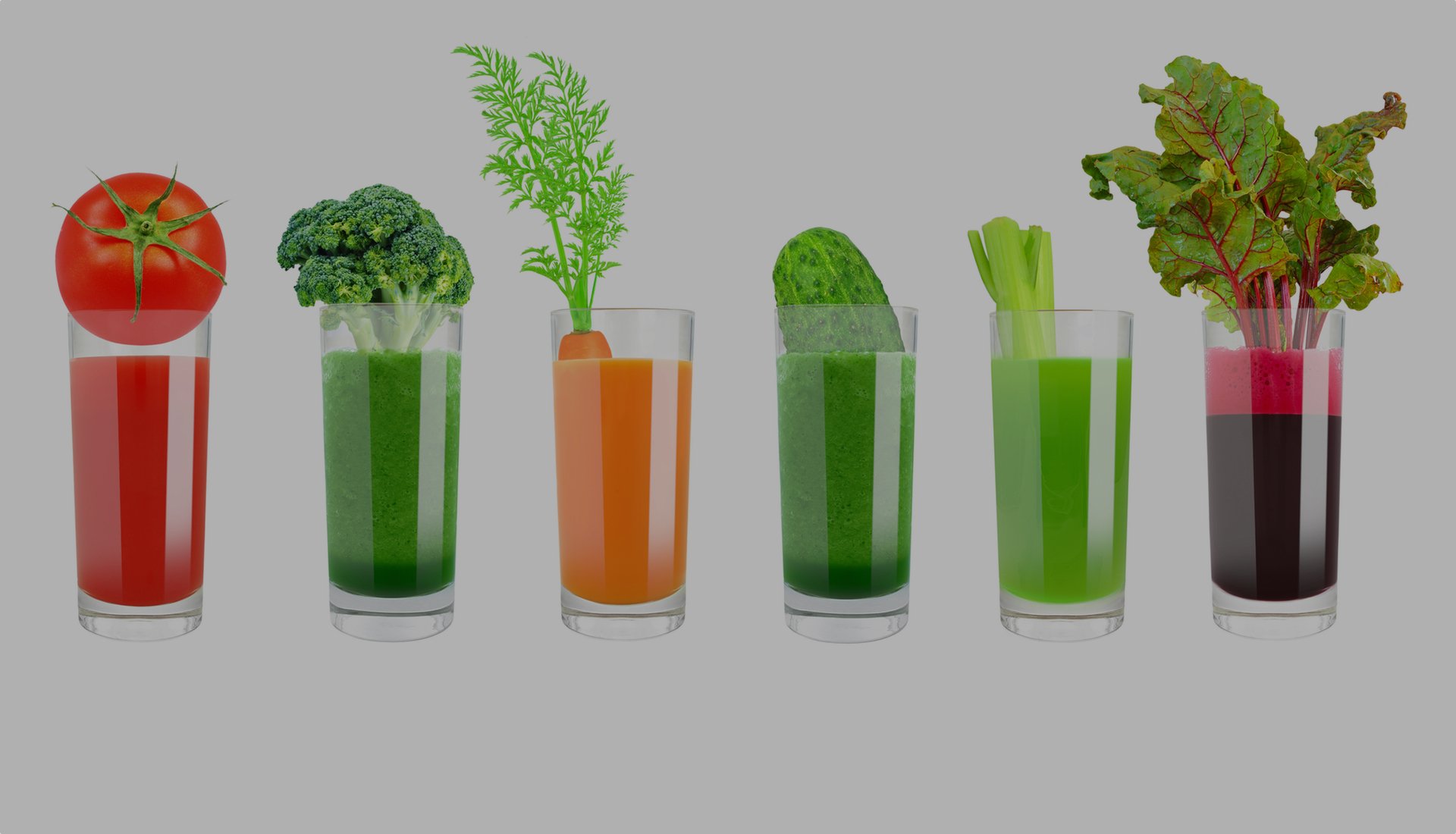Types of smoothies have gained immense popularity in recent years due to their refreshing taste and numerous health benefits. These blended concoctions offer a convenient way to pack a variety of fruits, vegetables, and other nutritious ingredients into a single, delicious drink. From energizing breakfast options to post-workout recovery drinks, types of smoothies cater to a wide range of tastes and dietary needs. In this blog, we will explore the different types of smoothies, ranging from classic fruit-based varieties to more specialized and unique options.
Popular types of smoothies
- Fruit-Based Smoothies:
Fruit smoothies are the classic choice and a great starting point for beginners. They are made by blending a variety of fresh or frozen fruits with a liquid base, such as water, milk, yogurt, or fruit juice. Some popular fruit-based smoothies include:
a) Berry Blast: A combination of mixed berries, such as strawberries, blueberries, and raspberries, providing a burst of antioxidants and natural sweetness.
b) Tropical Paradise: A refreshing blend of pineapple, mango, and banana, transporting you to a sunny beach with every sip.
c) Citrus Splash: Tangy and invigorating, this smoothie incorporates citrus fruits like oranges, grapefruits, and lemons, providing a vitamin C boost.

- Green Smoothies:
Green smoothies are an excellent way to incorporate nutrient-rich vegetables into your diet. They typically feature leafy greens, such as spinach, kale, or Swiss chard, along with fruits and other ingredients. Green smoothies offer a great balance of fiber, vitamins, and minerals. Some popular green smoothies include:
a) Popeye’s Delight: A classic green smoothie packed with spinach, banana, almond milk, and a spoonful of nut butter for added creaminess and protein.
b) Kale and Kiwi Kick: A vibrant combination of kale, kiwi, pineapple, and coconut water, offering a refreshing and tropical twist.
c) Detox Powerhouse: A cleansing blend of spinach, cucumber, celery, lemon, ginger, and parsley, perfect for supporting your body’s natural detoxification process.

- Protein Smoothies:
Protein smoothies are an excellent option for post-workout recovery or as a meal replacement. They provide a significant protein boost, aiding in muscle repair and growth. Some popular protein smoothies include:
a) Banana Oat Blast: A hearty blend of bananas, oats, almond milk, and a scoop of your favorite protein powder, providing a satisfying and energizing start to your day.
b) Peanut Butter Powerhouse: Creamy and delicious, this smoothie combines peanut butter, Greek yogurt, chocolate protein powder, and a frozen banana, offering a protein-packed treat.
c) Coffee Lover’s Protein Fix: For coffee enthusiasts, this smoothie combines cold brew coffee, chocolate protein powder, almond milk, and a hint of vanilla, creating a refreshing and caffeinated beverage.

- Specialty Smoothies:
Apart from the classic smoothie options, there are numerous specialty smoothies that cater to specific dietary needs or taste preferences. These include:
a) Vegan Delight: Made with plant-based milk, such as almond or soy, along with fruits, vegetables, and vegan protein sources like hemp seeds or pea protein powder.
b) Keto-Friendly Smoothie: Low in carbohydrates and high in healthy fats, these smoothies often include ingredients like avocado, coconut milk, and MCT oil.
c) Antioxidant Boost: Packed with superfoods like acai berries, goji berries, or matcha powder, these smoothies provide a concentrated dose of antioxidants to support overall health.

Yogurt Smoothies: Characteristics and Benefits
- Creamy Texture: Yogurt lends a creamy and velvety texture to smoothies, enhancing their overall mouthfeel and making them more satisfying to consume.
- Tangy Flavor: Yogurt adds a pleasant tangy flavor to smoothies, which complements the sweetness of fruits and other ingredients. This tanginess can help balance the overall taste profile of the smoothie.
- Probiotic Content: Yogurt is a fermented dairy product that contains beneficial bacteria known as probiotics. These probiotics support gut health by promoting a healthy balance of gut flora, aiding digestion, and supporting a strong immune system.
- Protein Boost: Yogurt is a good source of protein, making it an excellent addition to smoothies, especially for those looking to increase their protein intake. Protein is essential for muscle repair, growth, and overall satiety.
- Nutrient Density: Yogurt is rich in essential nutrients such as calcium, potassium, phosphorus, vitamin B12, and riboflavin. Adding yogurt to smoothies can provide an extra nutritional boost.
Benefits of Yogurt Smoothies:
- Digestive Health: The probiotics found in yogurt help support a healthy digestive system by maintaining a balanced gut microbiota. They can alleviate symptoms of digestive issues such as bloating, gas, and constipation.
- Improved Nutrient Absorption: The probiotics in yogurt can enhance the absorption of certain nutrients in the gut, such as calcium and B vitamins.
- Enhanced Bone Health: Yogurt is an excellent source of calcium, which is vital for strong bones and teeth. Regular consumption of yogurt smoothies can contribute to maintaining healthy bone density.
- Weight Management: Yogurt smoothies can be a satisfying and nutritious snack or meal replacement option. The combination of protein, fiber, and healthy fats in yogurt helps promote feelings of fullness and can support weight management goals.
- Boosted Immune System: The probiotics in yogurt can strengthen the immune system by promoting a healthy balance of gut bacteria. A strong immune system is essential for fighting off infections and maintaining overall health.
- Post-Workout Recovery: Yogurt smoothies containing protein can be an ideal post-workout beverage. The protein helps repair and rebuild muscles after exercise, while the carbohydrates in fruits provide energy replenishment.
- Versatility: Yogurt smoothies offer endless possibilities for flavor combinations. You can customize your smoothies by adding various fruits, vegetables, spices, and other ingredients to suit your taste preferences and nutritional needs.
Incorporating yogurt into your types of smoothies can provide a creamy texture, tangy flavor, and an array of health benefits. Whether you enjoy them as a quick breakfast option, a refreshing snack, or a post-workout recovery drink, yogurt smoothies offer a delicious way to nourish your body and support overall well-being. So, grab your blender and start experimenting with different yogurt smoothie recipes to find your favorite combination!
Tips for making the perfect types of smoothies
Types of smoothies are a versatile and customizable beverage that allows you to experiment with flavors and ingredients. To help you create the perfect smoothie every time, here are some tips to keep in mind:
- Start with a Good Blender: Invest in a high-quality blender that can handle blending a variety of ingredients, including frozen fruits, leafy greens, and nuts. A powerful blender will ensure smooth and creamy results.
- Choose a Variety of Ingredients: Select a combination of fruits, vegetables, liquids, and additional add-ins to create a balanced and nutritious smoothie. This includes fresh or frozen fruits, leafy greens, yogurt, milk (dairy or plant-based), nut butters, protein powders, and superfood boosters.
- Use Frozen Fruits: Frozen fruits not only add a refreshing chill to your smoothie but also provide a thick and creamy texture. They eliminate the need for ice cubes, which can dilute the flavor.
- Balance Flavors: Consider the flavors and textures of the ingredients you’re using. Experiment with the balance between sweet and tangy fruits, and use ingredients like citrus juice or fresh herbs to add a refreshing twist.
- Add Leafy Greens: Sneak in some nutrient-rich leafy greens like spinach, kale, or Swiss chard. They add vitamins, minerals, and fiber without compromising the taste of your smoothie. Start with small amounts and gradually increase the greens as you get accustomed to the taste.
- Liquid Ratios: Choose a liquid base that complements your ingredients. Options include water, milk (dairy or plant-based), coconut water, or fruit juices. Adjust the amount of liquid based on the desired thickness of your smoothie.
- Incorporate Texture and Thickness: To achieve a desirable texture, blend the smoothie for an adequate amount of time. If you prefer a thicker consistency, add less liquid or include ingredients like avocado, frozen banana, or Greek yogurt.
- Add Protein: Enhance the nutritional value of your smoothie by adding a protein source. Options include Greek yogurt, protein powder (whey, plant-based, or collagen), nut butter, chia seeds, or hemp seeds. Protein helps to keep you fuller for longer and aids in muscle recovery.
- Experiment with Superfoods: Superfoods like acai berries, spirulina, chia seeds, or matcha powder can provide an extra nutritional boost to your smoothie. They are packed with antioxidants, vitamins, and minerals.
- Don’t Forget the Sweeteners: If your smoothie needs a touch of sweetness, consider natural sweeteners like honey, maple syrup, or Medjool dates instead of refined sugar.
- Garnish and Enjoy: Pour your smoothie into a glass, and feel free to garnish it with toppings like coconut flakes, granola, sliced fruits, or a sprinkle of cinnamon. Take a moment to savor and enjoy the delightful flavors and textures you’ve created.
Remember, the beauty of making types of smoothies lies in your creativity and personal preferences. Feel free to experiment with different combinations and ratios until you find the perfect smoothie that suits your taste buds and nutritional needs. Cheers to a delicious and healthy smoothie-making journey!
Conclusion
Types of smoothies are a fantastic addition to a healthy diet, offering a convenient and delicious way to consume a wide range of nutrients. Whether you’re looking for a refreshing fruity blend, a nutrient-packed green smoothie, a protein-rich option, or a specialty smoothie tailored to your dietary preferences, there is a smoothie out there that’s perfect for you.
By experimenting with different combinations of fruits, vegetables, liquids, and additional ingredients, you can create a personalized smoothie that meets your taste preferences and nutritional goals. Whether you’re seeking a quick breakfast option, a post-workout recovery drink, or a satisfying snack, smoothies provide endless possibilities to suit your needs.
Remember to choose fresh and high-quality ingredients whenever possible. Opt for organic produce to reduce exposure to pesticides and choose natural sweeteners like honey or maple syrup instead of refined sugar. Additionally, consider adding nutritious add-ons like chia seeds, flaxseeds, or nut butter to further enhance the nutritional value of your smoothie.
It’s also worth mentioning that portion control is essential when enjoying smoothies, especially if you’re watching your calorie intake. While smoothies can be a nutritious choice, they can also be high in calories if you’re not mindful of the ingredients and portion sizes. Pay attention to the overall balance of your smoothie and consider using measuring cups or a kitchen scale to ensure appropriate serving sizes.
So, whether you’re a fan of classic fruit-based smoothies, adventurous enough to try green smoothies, in need of a protein boost, or have specific dietary requirements, there is a smoothie out there waiting for you. Get creative, have fun experimenting with different flavors and ingredients, and enjoy the journey of discovering the smoothie that best suits your needs and tastes.
Cheers to a refreshing and healthy lifestyle with the wonderful world of smoothies!